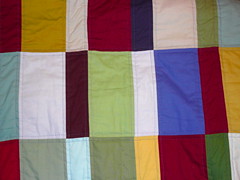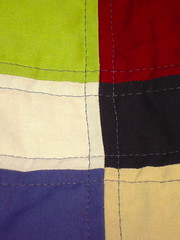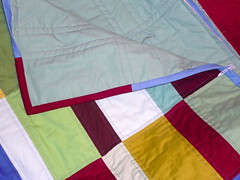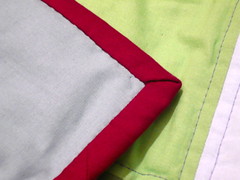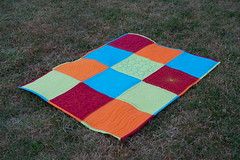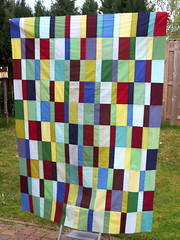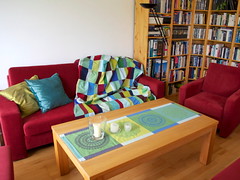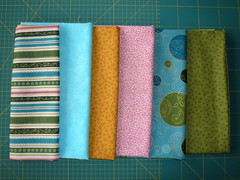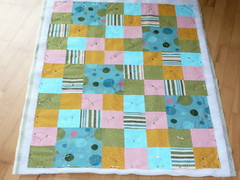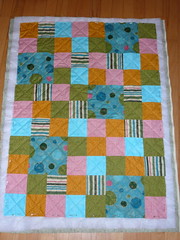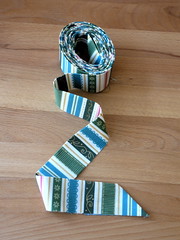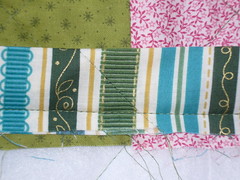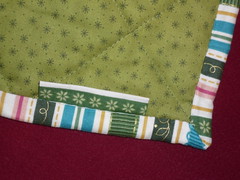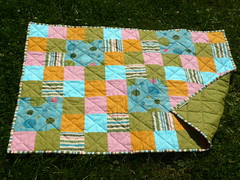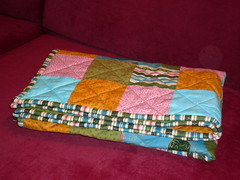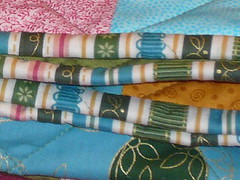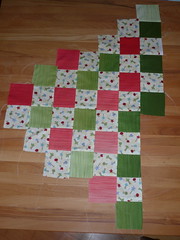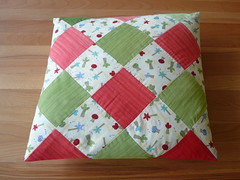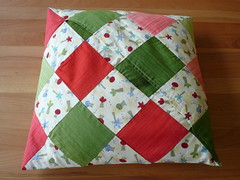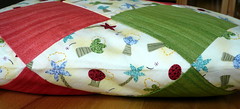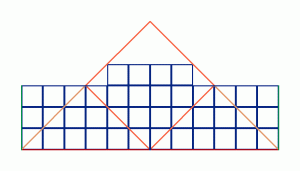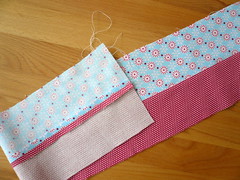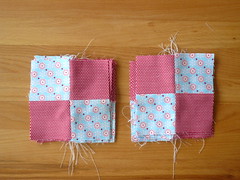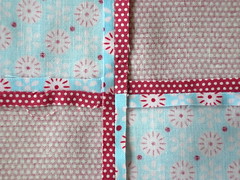Remember the quilt I’ve been working on? The top was done in May, and I basted it in July, I think. I then started to quilt it by machine, sewing straight lines to the left and right of each seam. This added up to 36 lines lengthwise and 18 across the quilt. The long lines took a very long time because I still use my grandma’s sewing machine which is 55 years old and doesn’t have a walking foot. The feed dogs are not strong enough to pull the entire weight of a quilt, so I had to move it by hand. Cotton fabric is surprisingly slippery, and my hands were tired after a single line. Quilting gloves are not easily available where I live, so I put on rubber gloves and quilted the lines one or two at a time.
This weekend I finally managed to finish the last of the long lines and started with the short ones across the quilt. They turned out to go much faster because the quilt was easier to handle, and I managed to sew them all within one hour on Friday.
Yesterday I sewed the binding strip out of the light bright blue fabric that appears in the quilt, which took about an hour including ironing the fabric, pressing the seams open and pressing the whole seven metres of binding in half lengthwise. This was followed by a two-hour session at the sewing machine to attach the binding to the front of the quilt. Once again I cursed the lack of a walking foot, but I finally managed to get it done.
Now all that’s left to do is sewing the binding to the back of the quilt, which I do by hand with invisible stitches because I like the look.
I’m quite sure I’ll never again sew a quilt of this size on this sewing machine, so I want this one to look as perfect as possible. (This includes neatly mitered corners.)
I started this morning with one corner and found that it takes a long time; if my calculations are correct, it might take me as long as twelve hours to sew the whole binding down, but if I spend some time on it every day and do it half an hour at a time, I should be able to comfortably make my self-imposed deadline, which is Christmas. We are going to visit my grandparents then, and I want to show the finished quilt to my grandma. I also may have to make some time to sew a little Christmas present for her in the meantime, but shhh, don’t tell her! ;-)

